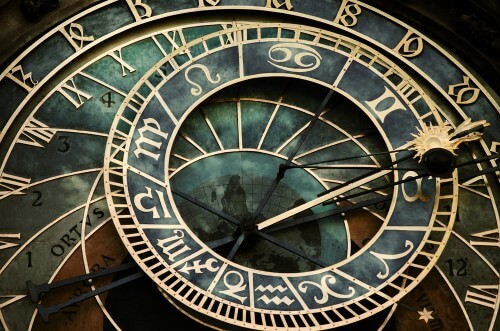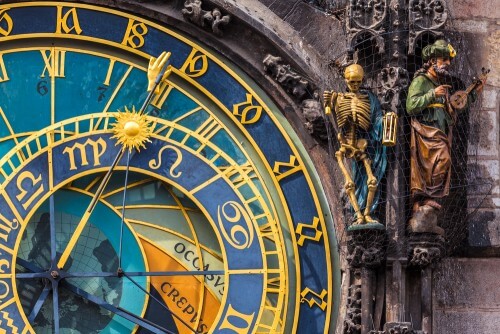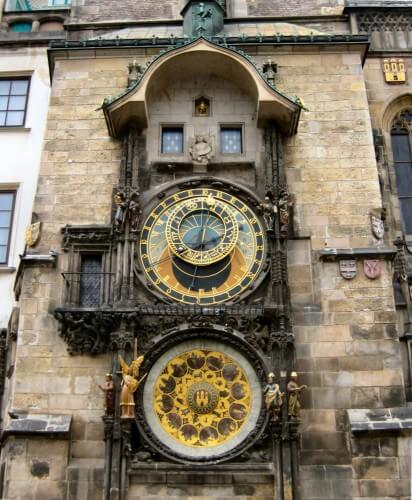Today marks the 605th anniversary of the start of the Astronomical Clock in Prague, a marvel of medieval mechanical creation, which attracts thousands of tourists every day. It turns out that as far as astronomy is concerned, it can still be admired today

The Prague Astronomical Clock is one of the most sought-after tourist attractions in the historic center of the Czech capital. The clock is mounted on the west wall of the Old Town Hall in Prague. Although it has been damaged several times in the past, it has always been repaired with the aim of preserving as much technical and artistic integrity as possible.
Today, it is the world's best-preserved imibanian clock. All components of the clock, including the clock mechanism, the bell system and the statues are still mainly controlled by the original mechanical mechanism, which was originally built in 1410 and opened to the public on October 9. The original movement of the clock was installed by the watchmaker Mikolas Mackaden and the professor of astronomy Jan Schindel of the University of Carle. In 1490, the human rabbi added the calendar and dolls. Since the major renovation that the clock underwent in 1886, its operation was also aided by a chronometer built by Romuald Buzek. The calendar was decorated in the middle of the 19th century with nature paintings of the four seasons by Josef Manes - a painter from the period of the Czech National Revival. During World War II, the town hall burned down and the clock was damaged, after which it was renovated and repaired.
According to a common legend, the people of the city council at the time were so enthusiastic about the man's work, and later began to fear that he would build a similar clock in another European city. So they blinded him and made sure that this wonder of the world remained unique to Prague.
Every hour, figures come out of windows on the sides of the clock and two other windows in which 12 messengers are seen moving in a circle greeting the residents of the city. The figures symbolize different types: a skeleton figure ringing a bell representing death, a Turk shaking his head symbolizing the enemy of the church, a man waving a sack full of money (which is believed to be described as a Jew) depicts the figure of the miserly merchant and the last figure is the arrogant one holding a mirror in her hand and looking at it.
On the sides of the lower clock appear: the historian, the angel, the astronomer and the philosopher. The windows above the clock open and dolls representing the twelve apostles move in a circle. The puppet show is concluded by a crowing golden rooster, which, according to one of the folk legends, the first show of the morning was intended to expel from Prague the spirits that entered it under the cover of darkness.
You can tell by looking at the hands of the clock the hours of the day, and the exact time of the month and year. The clock measures three different types of time: the Central European clock, the old Czech clock, and the Babylonian clock. You can also see the position of various celestial bodies as well as which sign currently rules the zodiac. It is the last astronomical clock in the world to provide this astronomical information.

The central component of the clock is the astronomical hand consisting of an astrolabe pointing to the celestial north pole.
The sun arm together with the golden arm indicate three types of time measurement: the clock that is accepted today, the old Prague time and the Babylonian time or sidereal time.
The customary civil time that divides the day into two parts of 12 equal hours starting respectively at 12 noon and midnight.
The ancient Czech (and Italian) time is also divided into 24 hours of equal length, starting from sunset. This time is shown by a hand rotating in a ring with 24 hours marked on it. This clock is attached to the Malacca ring in the acetrulab which indicates the sidereal year measured from the moment of the beginning of spring (vernal equinox) in the local longitude.
Babylonian time or planetary time, is a unit of time that is not used today in which the length of the hour is not equal during the day. Babylonian time is roughly measured by the position of the sun, or more precisely the meeting between the sun's arm and the Melaka plane. The time between sunrise and sunset is divided into 12 equal parts whose length varies throughout the year.
The golden sun figure indicates the current position of the sun both in the sky and in relation to the zodiac and the moon. It is also possible to read the position of the moon in the sky and in relation to the zodiac, as well as its position compared to the sun and the appearance of the moon on that day, which of course describes the visible part of the sunlight projected from the moon.
The calendar hand makes a complete turn in a year. This device was added to the astronomical clock for the first time in 1490. The current hand was installed in 1866. On the edges of the hour, day and year hands appear pictures of village life, painted in the 19th century by the painter Josef Manes. which symbolize the particular month of the year. It also describes the sun signs in an unconventional way. Mance's work was replaced by a copy due to fear that it would be damaged due to weather conditions.
On the sides of the clock there are plenty of statues. The lining of the cone is most likely a stone work by Peter Farler. Stone works and other decorative sculptures originate from the end of the 15th century and are designed in a Neo-Gothic style.

for further reading:
- Astronomical clock in Prague - Wikipedia
Acetrulev - Wikipedia - Page describing the clock on the website of the Ministry of Tourism of the Czech Republic
- A source for the astronomical explanations
More of the topic in Hayadan:
- The Late Birth of the Flat Land - Chapter from Stephen J. Gould's book "Dinosaur in a haystack"
- The first day of spring
2,600 years since the first successful scientific prediction - the solar eclipse of Thales that caused a truce
* Of course, at that time astrology was considered a science and the zodiac signs were not considered just "written" in the sky.

2 תגובות
"Stone work and other decorative sculptures originate from the end of the 15th century and are designed in a Neo-Gothic style."
Neo-Gothic style started about 300 years later.
How lucky we are left with one world standard for measuring time. Imagine what would happen if we had to convert between the existing standard and the French standard with 100 hours in a day and 100 minutes in an hour, and the English standard with a completely odd number of hours in a day and minutes and seconds, and a standard with hours of variable length, and a standard with 2 pi hours in a day. And just a decimal standard.